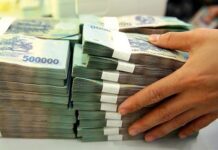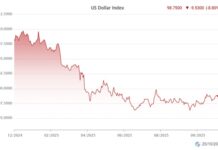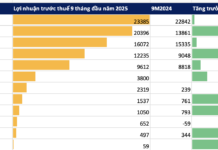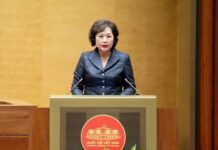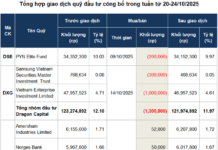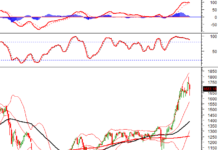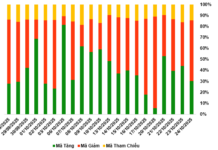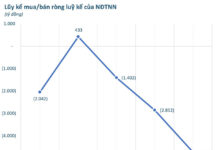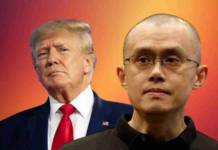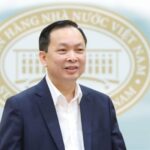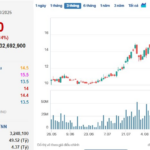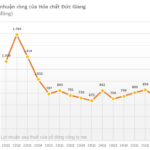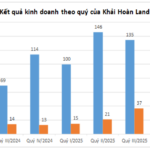On the occasion of the 80th National Day Anniversary (September 2nd, 1945 – September 2nd, 2025), the Vice Governor of the State Bank of Vietnam, Dao Minh Tu, shared his insights on the remarkable milestones of the banking sector in the past, present, and its strategic vision towards 2045.
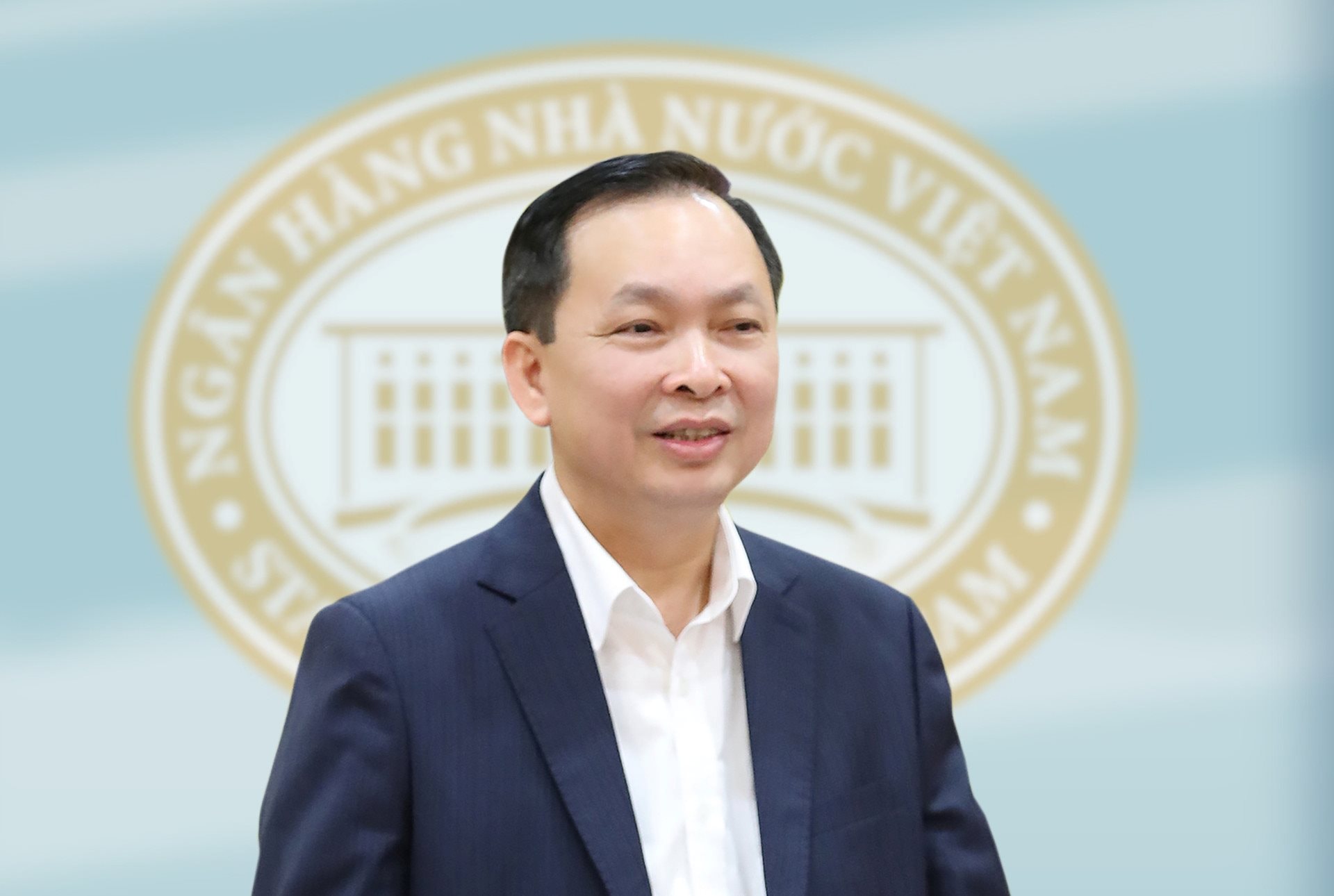
Reporter: On the occasion of the 80th anniversary of the National Day of the Socialist Republic of Vietnam (September 2nd, 1945 – September 2nd, 2025) and the 74th anniversary of the establishment of the State Bank of Vietnam, please share your perspective on the contributions of the State Bank in monetary policy management towards the development of the country over the past nearly 8 decades?
Vice Governor Dao Minh Tu: Along with the country’s deep international integration and development, the operations of the banking sector have undergone profound innovations, especially in the field of monetary policy formulation and implementation. The State Bank has gradually improved and modernized its monetary policy tools, moving closer to the modern central banking practices in line with international standards and the development trends of the national economy. Moreover, with a developing economy, where the banking system is the primary channel for capital allocation, monetary policy has played a crucial role as one of the government’s essential macro policies in promoting economic growth, aiming for rapid and sustainable development. Throughout this historical journey, the State Bank has consistently prioritized maintaining price stability and macroeconomic stability as the primary goal in its monetary policy management. A stable macroeconomic environment and controlled inflation are prerequisites for the country’s economic development, strengthening the foundation, and maintaining the confidence of investors, businesses, and the public in the business environment. This, in turn, helps attract foreign investment, mobilize, and allocate resources efficiently.
The monetary policy management has contributed to several notable achievements in the country’s socio-economic development, including:
First, successfully curbing inflation in line with the annual targets set by the National Assembly and the Government, and maintaining stable inflation expectations. For over a decade, inflation has been kept below the 4.5% target. This is the most significant and crucial political goal, ensuring the stability of the economy, strengthening the national currency, and building trust among domestic and foreign investors.
Second, ensuring the liquidity of credit institutions and supporting the adequate and timely provision of capital for production and business activities, thereby facilitating economic development.
Third, maintaining a stable money market with a downward trend in lending interest rates to support economic growth.
Fourth, achieving basic stability in exchange rates and a smooth foreign exchange market, with legitimate foreign currency demands being met.
Fifth, in the context of rising global risks and consecutive downgrades of many countries’ credit ratings due to the negative impact of the COVID-19 pandemic, international credit rating agencies have upgraded Vietnam’s credit rating due to its stable macroeconomic foundation and promising growth potential.
Reporter: During the period of national division and prolonged war, especially during the challenging period of the resistance war against America to save the nation, how did the State Bank fulfill its political and financial tasks to contribute to the overall victory?
Vice Governor Dao Minh Tu: After the Geneva Agreement (July 20, 1954), the North and the South were temporarily divided. The North embarked on building socialism, while the South entered the period of national democratic revolution.
During this phase, the State Bank undertook an extremely special mission: to become the financial lifeline of the revolution, meeting the needs of national construction in the North and effectively supporting the Southern battlefield in the resistance war against America to save the nation.
In the North, which served as the significant rear base for the entire country, the banking system maximized its role as a potent tool of the Party and the State in managing and regulating national currency and credit. This significantly contributed to economic stability, production development, and gradually building the foundation of socialism.
During this period, banking activities primarily focused on capital mobilization, credit, and cash, ensuring liquidity and facilitating the production of food and other essential goods. These activities aimed to build a robust rear base for the South and ensure a stable life for the people in the North.
By promulgating and synchronously implementing financial and credit policies suitable for the wartime conditions, the banking sector proactively mobilized resources from the people, cooperative societies, and various economic sectors, including state-owned and collective enterprises.
Bank credit funds were pooled and actively mobilized with the enthusiasm and responsibility of every citizen and socio-economic organization in the North, ensuring that financial resources reached where they were needed.
Notably, credit capital contributed to the development of the cooperative economy, agricultural estates, and key infrastructure projects during the initial industrialization phase in the North. Credit activities for production investment, agricultural credit, and savings credit also played a part in forming a self-reliant and self-sufficient economy, gradually moving away from the manual subsidy mechanism towards building a socialist financial and banking system. This period was immensely important, laying the groundwork for the subsequent development of the banking sector.
In the South, on the front lines, the unsung heroes of the banking sector directly participated in the resistance war for national liberation. Despite working quietly behind the scenes, their contributions and sacrifices on the financial and monetary front were immense. They braved the bombs and bullets to establish and provide financial resources for the Southern battlefield. Their efforts etched a legendary path—the secret money transfer route to support the Southern battlefield from 1959 until the Liberation in 1975.
Looking back, it can be affirmed that the State Bank excellently fulfilled its political, financial, and monetary tasks during this extraordinary period in the country’s history. The banking sector not only ensured financial support for the resistance war but also contributed to establishing monetary independence and economic sovereignty, ultimately leading to the great victory in the Spring of 1975, reunifying the country and unifying the currency and the people’s hearts.
Reporter: As we envision the year 2045 – when the country celebrates its 100th anniversary of independence and enters a new era of prosperity and strength for the nation, what are the strategic goals set by the State Bank?
Vice Governor Dao Minh Tu: Towards the vision of 2045 – a significant milestone marking the 100th anniversary of our nation’s independence, the State Bank sets its strategic goal to steadfastly follow the leadership of the Party while promoting proactiveness, creativity, and a strong sense of responsibility. We aim to closely coordinate with ministries, sectors, and localities to achieve the country’s overall development goals optimally.
With this in mind, the State Bank has set forth several key objectives and orientations for the banking sector to realize the aspiration of making Vietnam a prosperous and thriving country with high income by 2045.
Firstly, innovate and perfect the institutional system.
Secondly, continue to closely monitor the domestic and international economic situation to proactively advise and report to the Government and the Prime Minister on appropriate policies and proactively, flexibly, timely, and effectively manage monetary policy. Ensure harmonious and close coordination with fiscal policy and other macroeconomic policies to control inflation, contribute to macroeconomic stability, and support economic growth, aiming for a double-digit growth rate.
Thirdly, manage credit in alignment with macroeconomic developments, inflation, and the economy’s capital absorption capacity to promote economic growth.
Fourthly, continue to invest in and develop modern payment infrastructure and information technology infrastructure. Additionally, strengthen inspection, supervision, and monitoring to ensure security, safety, and confidentiality in payment and banking activities, meeting the increasingly high demands of businesses and people.
Reporter: It is known that four years ago, on the occasion of the 70th anniversary of its establishment, the State Bank compiled and published the research work “History of Vietnamese Currency.” Please share with us the significance and value of this special work?
Vice Governor Dao Minh Tu: From a historical perspective, currency is not merely a means of payment but also a mirror reflecting the political, economic, social, and cultural context of each period. From the ancient coins of the feudal era to the revolutionary banknotes issued during the resistance war and the unified currency after 1975, each tells a story of national independence, the aspiration for national reunification, and Vietnam’s journey towards a self-reliant financial and monetary system.
The book, “History of Vietnamese Currency,” is a special milestone with profound meaning for the banking sector. It is a project that we have cherished, prepared, and dedicated ourselves to for an extended period. As the editor-in-chief of this work, I can say that it is a collective effort involving 50 contributors. This process involved meticulous research and analysis, not just a relatively rigorous and comprehensive systematization but also a detailed evaluation of each currency during specific periods or stages. Notably, in this book, we chose the period from 968 (when Dinh Bo Linh unified the Twelve Warlords to establish Dai Co Viet) to 970, when the first currency, “Thai Binh Hung Bao,” was issued. Over a millennium has passed, and we have gone through various historical periods with thousands of currencies issued throughout our history, all of which are documented and compiled in this book. This work is not only a scientific document but also a legacy of knowledge with exceptional historical, cultural, and economic value, vividly reflecting the country’s development through the lens of currency.
We hope that this book will not only serve as a valuable research reference for scientists, historians, and economists but also as a “memory bridge” for the public, especially the younger generation, to understand the values that our forefathers have painstakingly built. It is also the banking sector’s tribute to our nation’s history and an affirmation of the critical role of the national currency in building and defending the country.
Reporter: One notable aspect is that the image of President Ho Chi Minh has been consistently featured on Vietnamese currency since its issuance by the Government of the Democratic Republic of Vietnam, now the Socialist Republic of Vietnam, from 1946 until today. What does this signify?
Vice Governor Dao Minh Tu: The consistent presence of President Ho Chi Minh’s image on Vietnamese currency, from the first banknotes issued in 1946 to the current polymer banknotes, is a deliberate choice, reflecting a clear intention to showcase national symbols, political stability, and the unique identity of Vietnamese currency. This is not merely a tribute to an individual in history but an affirmation of the core values cherished and preserved by the Vietnamese nation.
President Ho Chi Minh was the founder of the Democratic Republic of Vietnam, now the Socialist Republic of Vietnam. More importantly, he is not only a historical figure but also a symbol of morality, culture, and thought for the entire nation. In the eyes of the Vietnamese people, the image of Uncle Ho evokes not only a specific person but also our cultural identity, patriotic spirit, and national independence. One can say that his image is both familiar and sacred in the consciousness of the Vietnamese people. The Vietnamese currency, bearing the image of Uncle Ho, has created immense value, not just in economic terms and the stability of the currency’s value but also in fostering trust and cultural pride among our people.
Reporter: From the work “History of Vietnamese Currency,” what message would you like to convey to the younger generation and the public?
Vice Governor Dao Minh Tu: The work “History of Vietnamese Currency” is not merely a book about currency but also a vivid portrayal of our nation’s history. Through the journey of currency, we can witness the struggles for independence, sovereignty protection, and national construction of our forefathers.
I believe that for today’s youth and the general public, understanding the history of our currency is also a way to comprehend our country’s history and the sacrifices and efforts made to achieve an independent and autonomous financial and monetary system.
As President Ho Chi Minh once said, “Our people must know our history to understand the roots of our nation, Vietnam.” Understanding history—including the history reflected in our currency—is a way to foster patriotism and pride and instill a sense of responsibility to preserve and build upon the values established by previous generations.
I hope that today’s young generation—those carrying the aspirations to build a prosperous nation—will recognize that each banknote holds not only material value but also the soul of our nation. Appreciating and valuing the Vietnamese currency is to uphold trust, maintain stability for the present, and create a foundation for the country’s future prosperity and strength.
Reporter: Thank you, Vice Governor!
“From Laying the Foundations of Monetary Independence and Economic-Financial Sovereignty to the Aspiration of Making Vietnam a Prosperous and Powerful Nation.”
The State Bank of Vietnam has stood the test of time, proudly serving the nation for 74 years. Beyond its role as a financial and monetary regulator, it acts as a stalwart guardian of macroeconomic stability. Through its diligent management of inflation, exchange rates, and vigilant oversight of the banking system, the State Bank has cemented its position as a pillar of strength. This institution safeguards monetary sovereignty, fortifies the foundations of economic independence, and instills unwavering confidence as Vietnam strides forward in its international integration journey.
“Preserving Currency Value, Instilling Investor Confidence”
The banking industry is at the forefront of monetary policy, proactively and adeptly steering the nation’s currency. With a dynamic approach to financial strategy, it safeguards the country’s economic lifeline.
A Creative Makeover: Unveiling EVNFinance’s Transformation with a New Name and Logo Post-Inspection
“EVNFinance (EVF) has announced a name and logo change following an inspection that revealed a number of irregularities in its lending practices. The inspection found that EVF had granted credit to organizations and individuals who did not meet the legal requirements, misclassified assets, and improperly provided domestic credit in foreign currency.”






